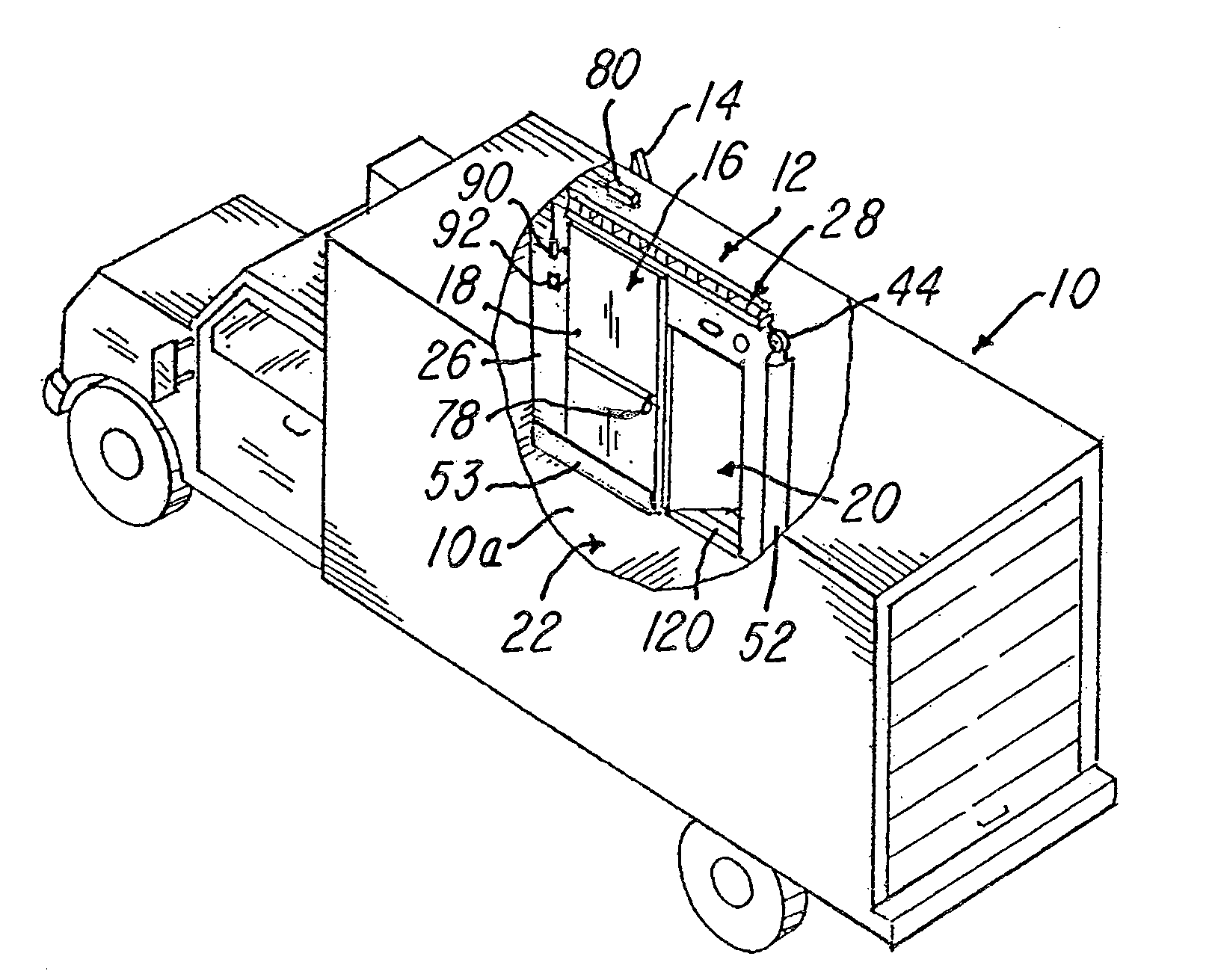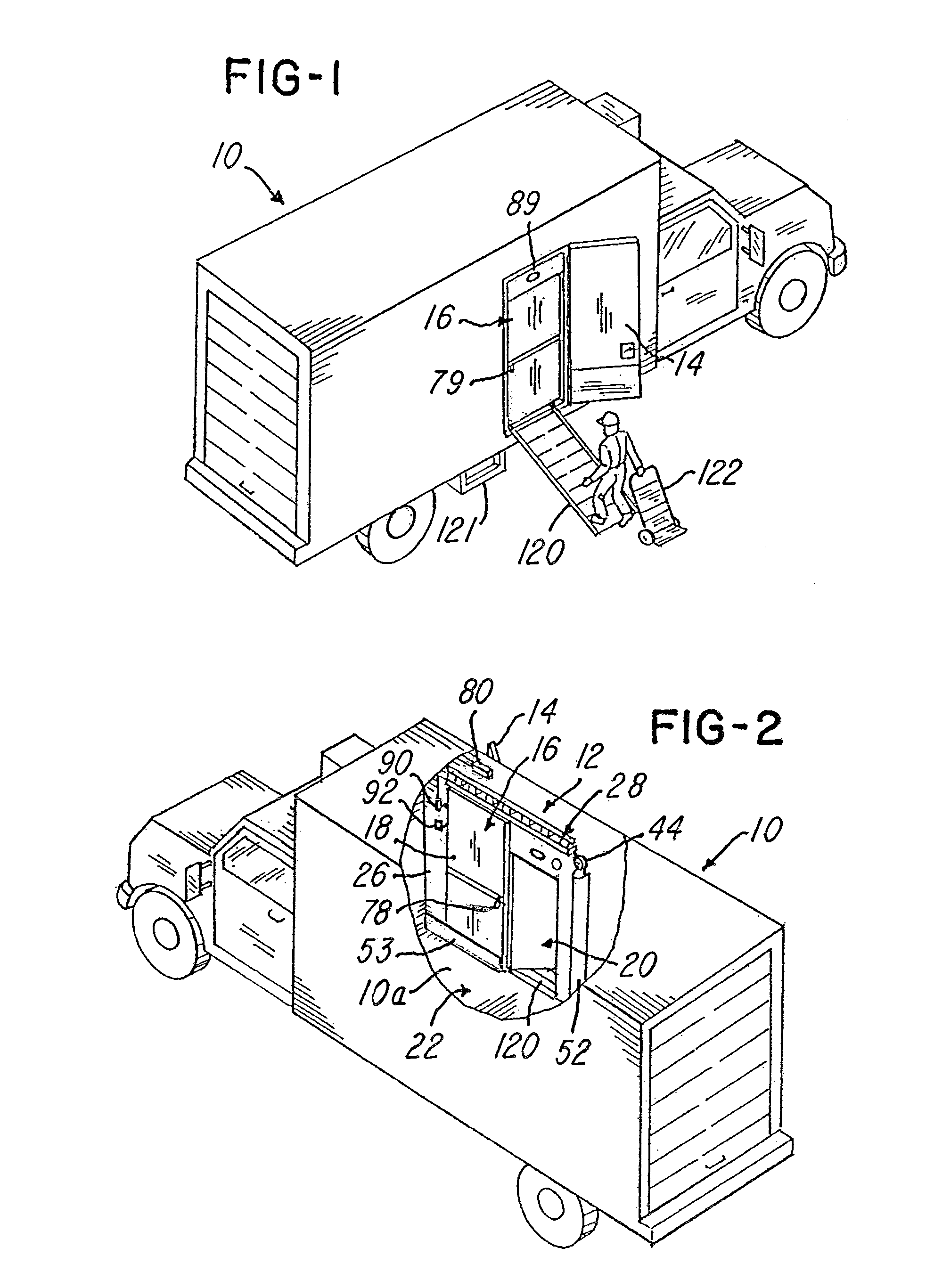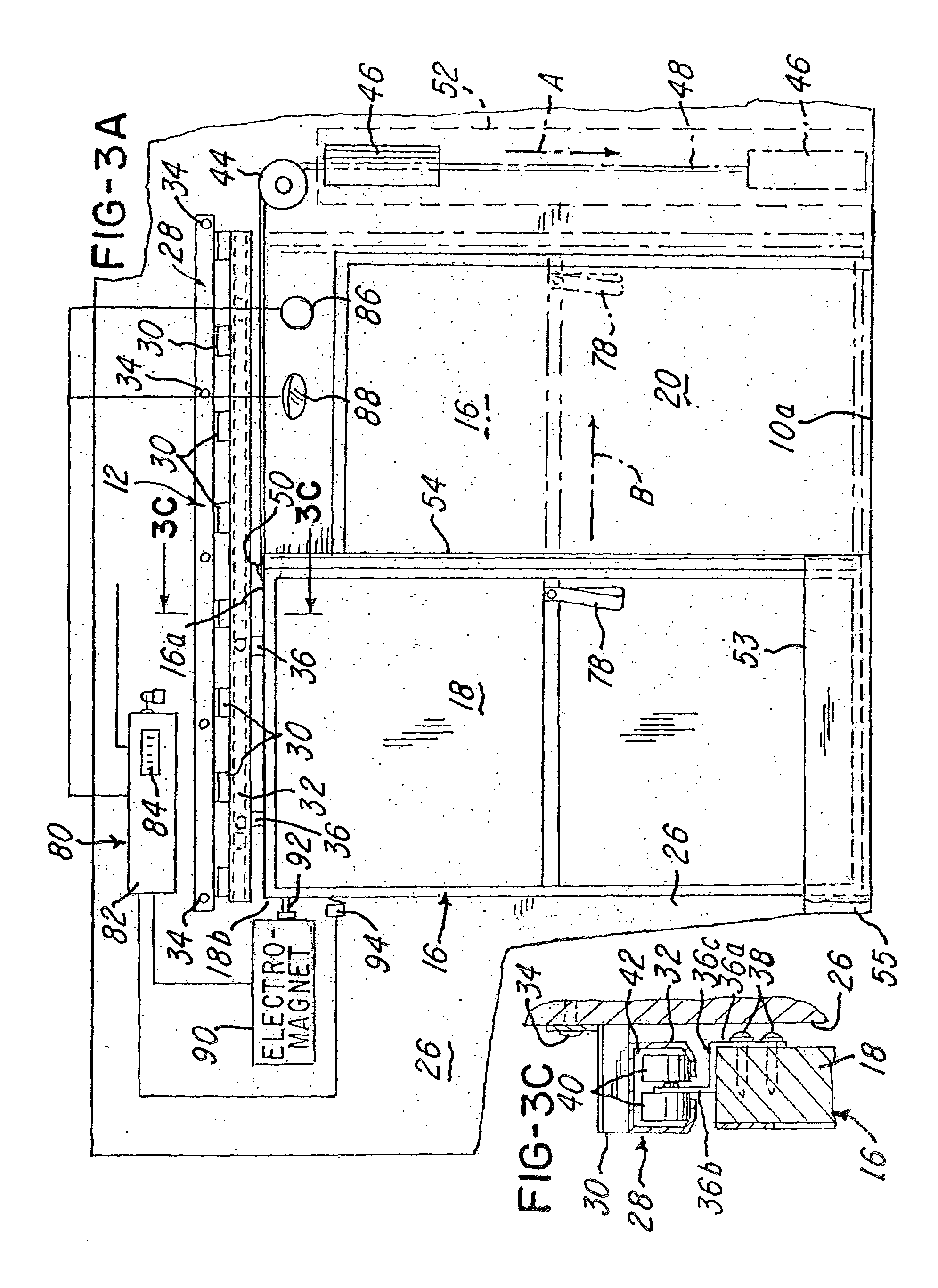Secondary door and temperature control system and method
a technology for secondary doors and temperature control systems, applied in the direction of doors, roofs, transportation and packaging, etc., can solve the problems of affecting the quality of products or cargo stored in storage compartments, affecting the quality of products or cargo, and in many cases the temperature of reefer units freezes up during delivery, so as to reduce the risk of temperature loss inside the storage compartmen
- Summary
- Abstract
- Description
- Claims
- Application Information
AI Technical Summary
Benefits of technology
Problems solved by technology
Method used
Image
Examples
Embodiment Construction
[0043]Referring now to FIGS. 1 and 2, a delivery vehicle 10 is shown having a secondary delivery door and temperature control system 12. In the illustration being described, the secondary delivery door and temperature control system 12 is intended for use primarily with refrigerated trailers 11 (FIGS. 10-18), the delivery vehicle 10 (FIGS. 1-2), such as delivery trucks having refrigerated compartments, or refrigerated areas wherein it is desired to maintain a predetermined temperature within a predetermined temperature range. For ease of description, most of the references herein are to a vehicle 10, but it should be understood that the features of the invention are equally applicable to, for example, the trailer 11. Temperature control is particularly desired when transporting frozen or chilled items, such as food and beverages.
[0044]As illustrated in FIGS. 1 and 2, the delivery vehicle 10 comprises a first or primary door 14, at least one moveable barrier, and a second or secondar...
PUM
 Login to View More
Login to View More Abstract
Description
Claims
Application Information
 Login to View More
Login to View More - R&D
- Intellectual Property
- Life Sciences
- Materials
- Tech Scout
- Unparalleled Data Quality
- Higher Quality Content
- 60% Fewer Hallucinations
Browse by: Latest US Patents, China's latest patents, Technical Efficacy Thesaurus, Application Domain, Technology Topic, Popular Technical Reports.
© 2025 PatSnap. All rights reserved.Legal|Privacy policy|Modern Slavery Act Transparency Statement|Sitemap|About US| Contact US: help@patsnap.com



